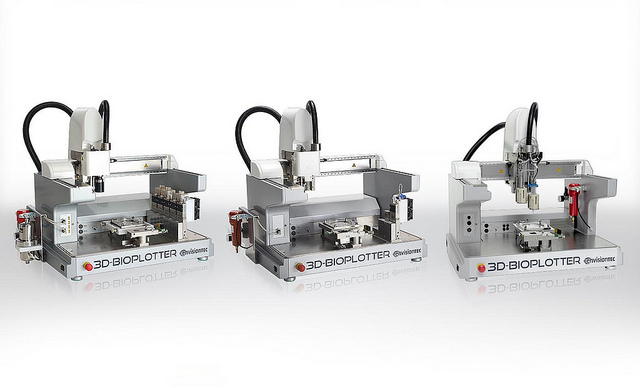The 3D-Bioplotter appears in more than 200 scientific, technical and medical research papers in peer-reviewed journals.
The modular machine “processes open-source biomaterials using air or mechanical pressure to a multitude of syringes that can fabricate scaffolds to create tissue, organs and more.”

In order to meet the demands for different capabilities, three versions of the 3D-Bioplotter are proposed by the manufacturer: a Starter, Developer and Manufacturer series.
After an analysis reporting the increasing amount of research being done with this bioprinter, Carlos Carvalho, in charge with EnvisionTEC’s development of the fourth generation of the 3D-Bioplotter said “the diversity and depth of these papers demonstrate the advanced research our customers can perform with our premium technology.”
A number of topics were covered such as:
- regeneration of bone, cartilage, soft tissue, nerves, tendon and teeth
- organ printing, including a bioprosthetic mouse ovary successfully implanted in-vivo resulting in a live birth
- direct cell printing
- trachea reconstruction
- spinal cord injuries
- drug release, such as gene therapy or treatment for epilepsy or tuberculosis
- particle-based inks which are mixtures of polymers, ceramics and metals
Outside of traditional medicine, the 3D-Bioplotter explores food industry as well as extraterrestrial building.

So what would be the next research , you would carry out with the 3D Bioplotter?
//pagead2.googlesyndication.com/pagead/js/adsbygoogle.js
(adsbygoogle = window.adsbygoogle || []).push({});
For further information about 3D Printing, follow us on our social networks and subscribe to our newsletter!





